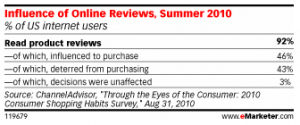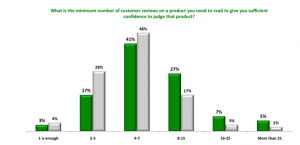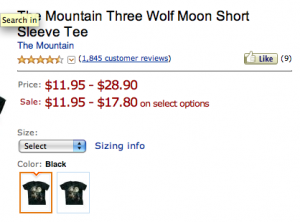I confess, I’m a research junkie, particularly when it comes to shopping. So reading endless customer product reviews is right up my alley. That’s just one of the reasons why I found a recent article from eMarketer on the influence of customer product reviews interesting, that and it’s well-timed publication just before the full blown launch of the holiday season.
According to eMarketer, the online customer product reviews we’ve come to know and love at Amazon, Best Buy and Overstock will become a fixture at more than 80% of all online retailers by the end of this year. Retailers have realized that reviews, even negative ones, are valuable and do not hurt sales.
But what about consumers? How do they view customer reviews? Personally, I find reviews provide that extra piece of insight into an item I’m thinking about purchasing – whether it be electronics, toys for my nearly three year-old daughter or healthier food for my two dogs. I want to know what other people’s experiences have been with a particular product, positive and negative. And while I’ll admit I am skeptical of some reviews, in most cases I believe I can pull at least one piece of helpful information away from a review. Apparently, I’m not alone. More than 90% of US Internet users read customer reviews and are influenced by them in some way according to eMarketer.
In addition to eMarketer’s latest report, the e-tailing group in conjunction with PowerReviews, conducted a follow up survey to a 2007 study on social shopping trends. The May 2010 results showed a 77% increase from 2007 in the percentage of consumers reading 8 customer reviews or more. This also translates into spending more time researching a product before making a purchase.
However, customer reviews are not perfect and the public is keenly aware of the subtleties that exist in this social rating method. As I mentioned earlier, doubting reviews and reviewers is part of the game. Some reviews are obviously nonsense, as evidenced by this item on Amazon.
Not only does this t-shirt (yes, it’s a t-shirt) have nearly 2,000 reviews, the reviews are ridiculous. Here’s just a snippet from one:
Why this item has not been removed, or the customer reviews have not been removed by Amazon is unknown, but it’s cases like this that cause consumers to doubt the authenticity and worth of reviews. According to the e-tailing group, more than two-thirds of their survey respondents doubt that reviews are written by “real customers.” In addition, 23% or more noted a lack of information about the reviewer, positive reviews are always mentioned first, and there are limited or no negative reviews. Even with these shortcomings, the influence of product reviews cannot be denied.
So this holiday season, before you make those last minute impulse purchases, consider taking a few moments to read a customer review or two. It’s worth whipping out your smartphone in the middle of Best Buy, Target or Toys R Us and it may save you from the long return lines after the holidays.
Related articles
- Customer Product Reviews: Undeniably Influential (connectingwithconsumers.net)
- Online Ratings & Reviews: A Sure-Fire Way to Increase Your Revenue (blogs.constantcontact.com)
- 53% of Online Shoppers Posted a Review Last Month [Study] (socialtimes.com)







Nicole,
Great post.
Customer reviews matter a lot regardless of their sentiment. Not only to savvy consumers, who trust them more than advertisers or expert reviewers, but also to manufacturers, who use the Word of Mouth analysis for planning their product updates. Online retailers knew for a while that availability of representative number of customer reviews, created uplift in sales. Our company (Amplified Analytics) is focusing on aggregation and contextual analysis of the customer reviews to enable our business customers to “hear” clear signals of what is important to their customers and how important it is to them. In other words we quantify qualitative information to enable better product design and marketing.